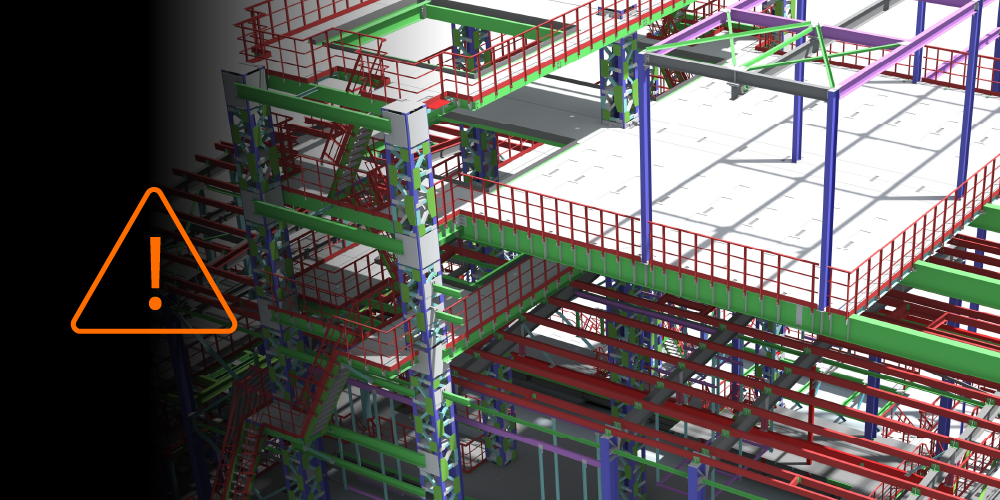Related Articles
— 8 min read
Boost Project Efficiency with Smarter Construction Data Management
Last Updated Aug 28, 2025
Samantha Nemeny
30 articles
Sam—Samantha if she’s feeling particularly academic—has spent a decade in content marketing, with eight years focused on Australia’s construction industry. She has a knack for making complex ideas easy to understand, turning industry jargon into clear, engaging stories. With a background in SEO and marketing, she’s spent the past three years at Procore, helping industry professionals navigate the world of construction with content that’s both insightful and easy to digest.
Last Updated Aug 28, 2025

Construction projects generate a constant stream of information across schedules, budgets, safety, procurement, and more. Without structure, this data quickly becomes noise.
This article explains how effective construction data management helps turn raw inputs into reliable insights that support quality control, accountability, risk mitigation, and faster decisions across every phase of the build.
Table of contents
What is Construction Data Management?
Construction data management is the process of organising and using project information to drive better outcomes on and off-site. When done well, it helps teams avoid schedule delays, minimise cost overruns, and reduce miscommunication.
Construction data management encompasses a wide range of data types, including:
- Financial data: Budgets, cost tracking, variations, and claims that influence financial control and forecasting
- Project management data: Schedules, task progress, and performance metrics that impact project delivery
- Quality and safety reports: Inspection records, non-conformance reports, and safety audits that support compliance and risk management
- Procurement and subcontractor data: Purchase orders, delivery schedules, and subcontractor agreements that affect site logistics
- Communication records: RFIs, submittals, and meeting minutes that capture decisions and keep teams aligned
- BIM and design files: Building models, schematics, and technical drawings that inform construction and coordination
Key Components of Construction Data Management
These five components form the backbone of strong construction data management.
1. Data Collection
Data collection is the process of recording information from every stage of the project, including preconstruction, site progress, safety, and financials. This may include site assessments, RFIs, inspections, and time logs.
Consistent data capture supports accurate progress tracking, performance measurement, and reporting to key stakeholders.
2. Data Storage
Centralising project documents and records in a secure, accessible environment ensures that teams can locate critical information when it matters. This includes drawings, change orders, cost data, and quality documentation.
3. Data Organisation
Information must be structured in a way that supports fast access and clear interpretation. Tagging, standard naming conventions, and categorisation by project phase or discipline prevent duplication and support a single source of truth.
4. Data Validation
Establishing version control, permission settings, and audit trails helps maintain accuracy and consistency. This reduces the risk of teams working from outdated or conflicting information.
5. Data Analysis
Data analysis involves reviewing performance, cost, and safety metrics to identify patterns, assess risks, and track progress over time. This enables better forecasting and more informed decision-making during delivery.
The Role of Effective Data Management in Construction Projects
Effective data management ensures every stakeholder is working with current, accurate information, reducing the risk of delays, duplication, and misalignment. Strong construction data management practices:
- Enable project teams to act faster by surfacing current data when and where it’s needed (drawings, RFIs, progress updates, etc.).
- Support stronger communication and collaboration across job roles.
- Reduce rework and confusion caused by outdated or siloed data.
Better Decision-Making Through Data
Data analysis allows project teams to detect trends and risks early, before they impact timelines or budgets. There are dozens of ways that construction teams can leverage data to enable better decision-making, including:
- Identifying cost overruns in forecasting models
- Analysing safety incidents to improve risk mitigation plans
- Adjusting sequencing based on actual site progress.
Construction management software can unify historical project data, enabling teams to learn from past projects and apply the learning to future planning.
For instance, teams can review scope accuracy, contractor performance, and budget variances from completed projects to inform future planning and improve the reliability of estimates and delivery strategies.
Compliance with Industry and Legal Requirements
Effective data management protocols support compliance with regulatory and contractual obligations by ensuring that documentation is complete, accessible, and up to date.
Data should be structured and controlled in ways that support:
- Workplace health and safety. Logging inspections, incidents, and hasard resolutions to meet WHS obligations and verify duty-of-care practices.
- Environmental regulation. Recording activities that may require approvals or trigger environmental assessments.
- Permits and building codes. Referencing the latest versions of permits, plans, and specifications to prevent non-compliance or construction errors.
- Data privacy. Restricting access to sensitive data using permission controls and audit trails to reduce legal and reputational risk.
- Contractual compliance. Documenting RFIs, submittals, and progress claims to support entitlements, reduce disputes, and protect commercial positions.
See what’s coming in construction over the next decade.
Download the Future State of Construction Report for insights, trends, and innovations shaping the industry over the next 8–10 years.

Construction Data Management Challenges + How to Solve Them
Even with the right systems in place, data management often breaks down in day-to-day delivery. The issues below are common across commercial construction projects and are solvable with clear workflows, defined ownership, and the right implementation strategy.
Data siloes cause miscommunication and information conflicts
- Consolidate platforms to reduce duplication and conflict between systems
- Integrate key tools to create a unified view across scheduling, procurement, and cost control
- Establish shared data standards early, and align both internal teams and subcontractors from day one
Incompatible file types and disconnected tools lead to delays
- Use platforms that support industry-standard formats like IFC or CSV
- Define accepted formats during subcontractor onboarding to reduce friction
- Connect systems through native integrations or middleware, where possible
Lack of a formal data governance structure prevents accountability
- Assign responsibility for each data category, such as scheduling, quality, or cost
- Document standard procedures for how data is captured, reviewed, and approved
- Revisit governance protocols at key project milestones to keep them aligned
Resistance to change leads to poor adoption
- Engage users early to address real pain points and secure buy-in
- Roll out new tools or workflows in phases, starting with one team or process
- Link usage to visible outcomes, such as faster approvals or fewer rework cycles
Resource constraints make it hard to dedicate time to data management
- Automate routine data capture (e.g., status updates, photo logs, and time tracking)
- Focus resources on high-impact data sets, such as cost trends or recurring defects
- Train site teams to complete basic workflows, reducing admin bottlenecks in the office
Best Practices for Managing Construction Data
Smart data management requires more than the right tools. It depends on consistent standards, defined ownership, and regular oversight to ensure accuracy, traceability, and long-term value.
Match Tools to Tasks: Use the Right Technology for the Job
No single platform covers every need. A mature data strategy pairs the right tool with the right function:
- BIM software: Coordinate models, detect clashes, and link designs with construction sequencing
- Project management software: Enforce workflows for submittals, approvals, and task dependencies
- Construction management platforms: Centralise RFIs, safety records, claims, and progress tracking
- Inventory and resource tools: Maintain live visibility on material availability and usage
- IoT devices: Capture site-level data on equipment, movement, and environmental conditions
- Geospatial tools: Support spatial planning and real-time monitoring across large or complex sites
- Cloud infrastructure: Provide secure access to project data across locations and devices
- AI and machine learning: Surface patterns in real-time data to flag delays, cost anomalies, or inefficiencies
Establish a Clear Construction Data Management Framework
A structured data plan defines who does what, when, and how, reducing ambiguity and supporting consistent execution across the project lifecycle.
- Assign ownership to each data category (e.g., scheduling, cost, quality)
- Define workflows for data capture, review, approval, and archiving
- Align data procedures with key project phases (preconstruction, delivery, and closeout)
- Use a central platform to monitor compliance and execution in real time
Standardise File Structures, Naming Conventions, and Metadata
Inconsistent file handling slows access, introduces errors, and complicates reporting. Standardisation ensures data is findable, usable, and traceable.
- Apply naming conventions by discipline, date, or drawing type to prevent mislabelling
- Use consistent folder hierarchies to support filtering and navigation
- Tag files with metadata such as location, trade, or system
- Set up templated structures or auto-classification where possible to reduce manual error
Train Teams on Data Handling and Tool Use
On-site teams play a critical role in data accuracy. Training ensures they know what’s expected and how to use the tools correctly.
- Provide formal onboarding for all platforms, with role-specific training
- Document SOPs for RFIs, inspections, progress updates, and other core workflows
- Monitor usage through dashboards or audit logs to flag non-compliance or gaps
Implement Strong Backup, Access, and Security Protocols
Reliable data systems depend on redundancy, controlled access, and traceable changes. These safeguards reduce operational and legal risk.
- Schedule automated backups and maintain version history for key files
- Restrict access based on user roles to limit exposure
- Use audit trails to track changes and reinforce accountability
- Ensure compliance with relevant data privacy laws, especially for HR and commercial records
Conduct Regular Audits and Data Quality Checks
Poor data quality compounds over time. Routine audits keep systems clean, current, and usable.
- Set a regular cadence for reviewing records and cleaning up duplicates or errors
- Audit for completeness, accuracy, and proper tagging
- Track quality metrics such as update frequency and data validity
Use Data to Improve Future Projects
Historical data is a critical asset. Reviewing past project performance helps teams refine strategies and avoid repeated mistakes.
- Benchmark cost, schedule, and quality across completed projects
- Analyse trends in RFIs, safety reports, and BOQ variances
- Apply predictive analytics to improve scoping, contractor selection, and scheduling on future jobs
Construction data management drives control, clarity, and compliance
Construction data management supports faster decisions, stronger compliance, and tighter project control. When teams apply clear standards and take ownership across the data lifecycle, they reduce risk, avoid delays, and gain the visibility needed to deliver with greater confidence.
Categories:
Written by
Samantha Nemeny
30 articles
Sam—Samantha if she’s feeling particularly academic—has spent a decade in content marketing, with eight years focused on Australia’s construction industry. She has a knack for making complex ideas easy to understand, turning industry jargon into clear, engaging stories. With a background in SEO and marketing, she’s spent the past three years at Procore, helping industry professionals navigate the world of construction with content that’s both insightful and easy to digest.
View profileExplore more helpful resources

Managing Direct Costs in Construction: How Visibility Drives Profitability
Direct costs define the financial reality of every construction project. They cover the labour, materials, and equipment that drive delivery and determine profitability. But even the best-planned budgets can shift...

BIM Clash Detection: Reducing Rework, Delays, and Risk in Construction
Design clashes can be a significant hidden cost in construction, as each conflict between systems risks expensive rework, project delays, and reduced margins. BIM clash detection empowers teams to identify...

Next-Gen Job-Costing: Ready to Move? 5 Things to Consider Before You Get Started
In this three-part series, Quantity Surveyor turned Financial Solutions Specialist Clint Burgess uncovers the real-world gains for people, processes, and profits when businesses move from legacy to next-generation Enterprise Resource...

From Workarounds to Workflow: Solving Construction’s Legacy Job-Costing System Challenges with Next-Gen Tools
In this three-part series, Quantity Surveyor turned Financial Solutions Specialist Clint Burgess uncovers the real-world gains for people, processes, and profits when businesses move from legacy to next-generation Enterprise Resource...
